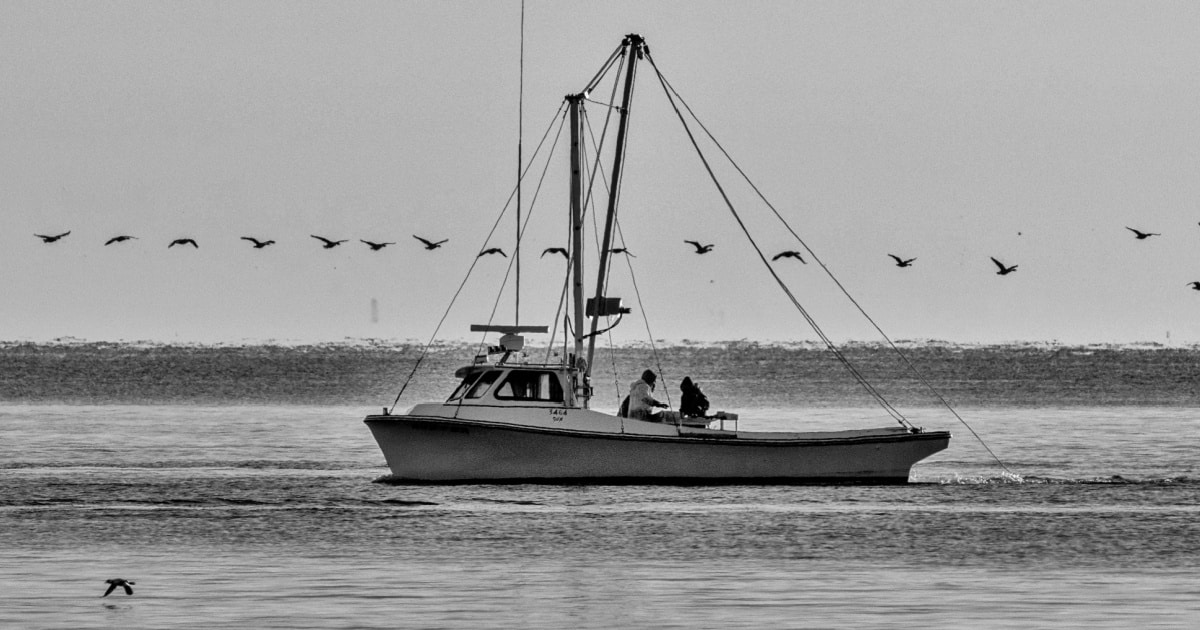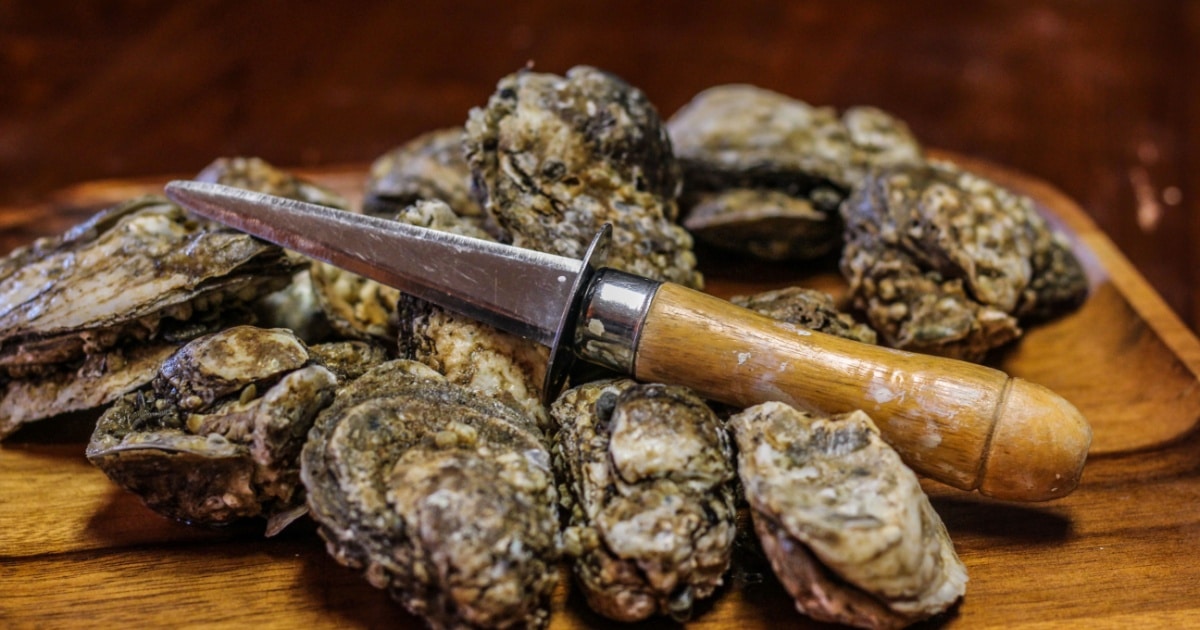Ever Wonder Why Oysters Taste Like the Ocean?
Hello there! Have you ever enjoyed an oyster and immediately thought of the sea? There’s something magical about how a single oyster can capture the essence of the ocean’s flavor. Oysters aren’t just delicious; they’re a direct connection to the marine world. In this post, we’re going to explore the fascinating reason behind the salty taste of oysters. So, get ready to dive deep into the story of oysters and their unique relationship with the ocean. Whether you’re an oyster aficionado or simply curious about this seafood delicacy, there’s a lot to uncover about why oysters taste so distinctly of the sea.
ONLINE SHIPPING
We’re excited to announce that we will soon be offering online shipping for our premium Maryland Blue Crabs! This new service will allow you to enjoy the fresh, succulent taste of our crabs from the comfort of your own home, no matter where you are. To make sure you’re among the first to experience this convenience, we invite you to visit our website and sign up for our notification email. By doing so, you’ll be promptly informed as soon as our shipping service goes live. Don’t miss out on this opportunity to have the finest Maryland Blue Crabs delivered straight to your doorstep. Click the button to visit the store to sign-up! 🦀📦🌍
The Secret Behind the Saltiness
You might be wondering, what exactly makes oysters taste so salty? Well, it all comes down to their lifestyle. Oysters are filter feeders, meaning they draw in water from their surroundings to catch tiny bits of food floating around. This water isn’t just any water; it’s seawater, filled with salt and a cocktail of minerals.
As oysters filter this salty water, they also absorb some of its flavors, including the saltiness we taste. But that’s not the only thing that contributes to their unique flavor. The environment where oysters grow, known as their “merroir” (similar to “terroir” for wine), plays a huge role. Factors like the type of algae available, the water temperature, and yes, the salinity of the water, all influence an oyster’s taste.
So, when you enjoy an oyster, you’re not just tasting the oyster itself; you’re tasting its environment. It’s a blend of the water’s salinity, the geography of the area, and the specific conditions of the oyster’s habitat. This is why oysters from different regions can taste remarkably different from each other, despite being the same species.

How Salinity Shapes Their Flavor
Ever notice how some oysters taste saltier than others? This isn’t just by chance; it’s closely tied to where those oysters grew up. The key player here is salinity, which is a fancy word for how salty the water is. Oysters from areas with higher salinity, closer to the open ocean, often have a sharper salty taste. This makes sense, right? More salt in the water means more salt in the oysters.
On the flip side, oysters that call estuaries home, where rivers meet the sea and mix fresh water with saltwater, tend to be less salty. These areas have lower salinity, so while the oysters still get that signature ocean taste, it’s a bit more subdued. Think of it like diluting saltwater with fresh water; the mix isn’t as salty as pure seawater.
This variation in salinity doesn’t just affect how salty an oyster tastes but can also influence its overall flavor profile. Oysters from high-salinity waters might give you that bold, briny flavor, while those from lower-salinity areas could have a sweeter, more nuanced taste. It’s all about the balance of minerals and salts they absorb from their surroundings, making each oyster a little taste of its specific corner of the ocean.
Geography’s Role in Oyster Flavor Profiles
While salinity sets the stage for an oyster’s salty taste, geography is the director that shapes its full flavor profile. Oysters are like sponges, soaking up the characteristics of their environment, which means their taste can tell you a lot about where they’ve been living.
Take the Chesapeake Bay, for example. It’s a vast estuary with a mix of fresh and saltwater, creating a unique environment for oysters. These oysters tend to have a balance of saltiness with a hint of sweetness, reflecting the diverse ecosystem of the Bay. The water here is less salty compared to the open ocean, thanks to the freshwater rivers flowing into it. This mix gives Chesapeake Bay oysters their distinct taste, different from their cousins out in the Atlantic.
But it’s not just the Chesapeake Bay; every body of water has its own signature flavor. From the cold, briny depths of the Pacific Northwest to the gentle estuaries of the Gulf Coast, geography plays a crucial role in determining an oyster’s flavor. The minerals in the water, the types of algae the oysters feed on, and even the water’s temperature contribute to creating a range of tastes as diverse as the world’s oceans and rivers themselves.
This is why oyster enthusiasts often speak about the importance of “merroir,” a term borrowed from winemaking’s “terroir,” to highlight how an oyster’s flavor is a reflection of its environment. Just as wine can embody the essence of its vineyard, an oyster mirrors the waters it calls home.
Chesapeake Bay Oysters: A Journey Through Flavors
The Chesapeake Bay is a treasure trove of oyster flavors, thanks to its diverse ecosystems stretching from the fresh waters of the north to the salty Atlantic in the south. This variety offers a unique opportunity to explore how geography and salinity shape the taste of these beloved bivalves. Let’s navigate through the Bay’s regions to discover the distinct flavors of its oysters:
Northern Bay: Here, the fresh waters dilute the sea’s saltiness, creating oysters with a subtle, sweet undertone. Perfect for those new to oysters, these gems offer a gentle introduction to the world of briny delights.
Mid-Bay: As we venture into the heart of the Chesapeake, the waters blend freshwater with ocean salt in a perfect equilibrium. Oysters from this region offer a balanced taste—a mix of mild sweetness with a hint of the sea’s brine, embodying the classic Chesapeake Bay flavor profile.
Lower Bay: Approaching the ocean, the salinity intensifies, and so does the flavor of the oysters. These are for the briny aficionados, delivering a bold, oceanic taste that’s as refreshing as a sea breeze.
Each area within the Chesapeake Bay contributes to a rich tapestry of tastes, making its oysters not just a culinary treat but a journey through the bay’s aquatic life. From the mild and sweet to the distinctly briny, Chesapeake Bay oysters capture the essence of their environment, offering a variety of flavors as vast as the bay itself.
This diversity showcases the beauty of the Chesapeake’s “merroir”—a term that highlights how the unique conditions of the oyster’s habitat influence its flavor, much like terroir does for wine. Sampling oysters from across the Chesapeake Bay is akin to tasting the stories of the waters they come from, each with its own character and history.
The Ocean’s Flavor, One Oyster at a Time
So, why do oysters taste salty? Our journey through the science of oyster flavors, the impact of water salinity, and the unique “merroir” of different regions, like the Chesapeake Bay, reveals a simple truth: oysters are a direct reflection of the waters they inhabit. Each oyster we enjoy is a little piece of the ocean, offering us a taste of its home.
This exploration into the salty essence of oysters is more than just a culinary curiosity; it’s a reminder of the natural beauty and complexity of our marine environments. Whether from the Chesapeake Bay or any other water body, oysters connect us to the sea in the most direct and delicious way possible.
By understanding and appreciating the diverse flavors of oysters, we also grow to appreciate the importance of sustainable seafood practices and the conservation of their aquatic habitats. So, the next time you savor the salty taste of an oyster, remember, you’re not just tasting seafood; you’re experiencing a piece of the ocean’s vast, interconnected ecosystem.
Explore More From T.L. Morris Seafood
If you enjoyed this post, you’re in for a treat! Dive deeper into seafood with some of my other articles that readers have loved:
- Which One is Better? Clams vs Oysters– Explore ‘Clams vs Oysters’ in our detailed guide, comparing their unique flavors, nutritional benefits, and roles in the marine ecosystem
- When Are Oysters in Season? It May Surprise You!– Learn ‘When Are Oysters in Season’ and the best months to enjoy these shellfish, from the Chesapeake Bay to the Pacific Northwest.
- Are Oysters Good for You? The Comprehensive Guide– Discover the health benefits of oysters in our latest article: Are oysters good for you? Dive into the facts now!
- Which One Is Better? Mussels vs Oysters– Dive into the ‘Mussels vs Oysters’ debate: Discover key differences in taste, nutrition, and environmental impact in our comprehensive guide.
Stay connected and keep exploring! Don’t forget to subscribe for the latest updates and insights.


